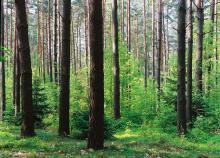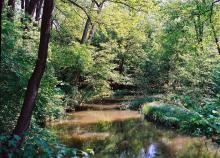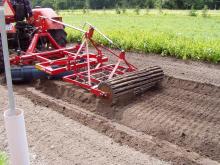 Asset Publisher
Asset Publisher
EDUCATIONAL OBJECTS
 Obiekty edukacyjne, fot. Jerzy Malicki
Obiekty edukacyjne, fot. Jerzy Malicki
 Obiekty edukacyjne, fot. Jerzy Malicki
Obiekty edukacyjne, fot. Jerzy Malicki
 Szkółka leśna w Rzeczycy, fot. Katarzyna Miechowicz
Szkółka leśna w Rzeczycy, fot. Katarzyna Miechowicz
The educational activities of the Forest District Krosno is carried out mainly on the basis of the nature and educational trail called "Osiecznica", which composes of Nature Chamber located within the seat of the Forest District. The supplement of educational activities conducted on the trail, there are meetings of the Forest District workers with their children and the youth in schools.
Important component of educational activity is share of the Forest District in events organised by local authorities. It gives possibility to get acquainted with the whole work of the State Forests at one time by a big group of people of different ages. Besides, the Forest District takes part in such educational undertakings organised within the area of Krosno District like – "Safe Junior High School", Joy Holiday (Święto radości), presentation of unformed services ( the Police, The Fire Service, the Border Guard, the Forest Guard Service) for junior high school students.
The Forest District Krosno pays great attention to cooperation with other companies from the territory of its management – it particularly concerns uniformed services – due to common propaganda and educational actions.
Educational Trails
Inthe Forest District Krosno, there is located the nature and educational trail called "Osiecznica".
The main targets the trail is to fulfil are:
- making possible to observe plant and animal species in their natural habitat,
-pointing at the problems of natural environment protection focusing on forest protection,
-creating appropriate attitude towards nature.
With a little bit of luck supported with quiet traversing the trail, we can observe here stags, deer, wild boars and numerous bird species. The route of the trail runs aside the seat of the Forest District, where the tourists can visit very attractive Education Chamber. There they can find exhibits collected in display cases, which show forest habitats, primeval and derivative and technical pests of forest trees, forest butterflies, etc. The main attraction of the chamber are exhibits of animals inhabiting the Forest District including birds of prey with white – tailed eagle at the head. Interested ones can also explore rich forest film library.
 Asset Publisher
Asset Publisher
Retencja lekarstwem na suszę
Retencja lekarstwem na suszę
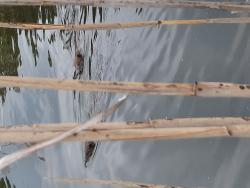 Mała retencja nizinna- Nadleśnictwo Krosno (fot. Arkadiusz Gołuch)
Mała retencja nizinna- Nadleśnictwo Krosno (fot. Arkadiusz Gołuch)
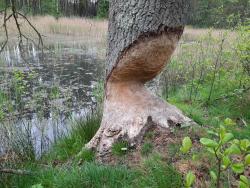 Mała retencja nizinna- Nadleśnictwo Krosno (fot. Arkadiusz Gołuch)
Mała retencja nizinna- Nadleśnictwo Krosno (fot. Arkadiusz Gołuch)
 Mała retencja nizinna- Nadleśnictwo Krosno (fot. Arkadiusz Gołuch)
Mała retencja nizinna- Nadleśnictwo Krosno (fot. Arkadiusz Gołuch)
 Mała retencja nizinna- Nadleśnictwo Krosno (fot. Arkadiusz Gołuch)
Mała retencja nizinna- Nadleśnictwo Krosno (fot. Arkadiusz Gołuch)
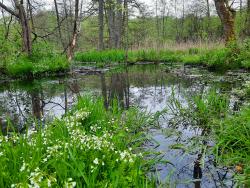 Mała retencja nizinna- Nadleśnictwo Krosno (fot. Arkadiusz Gołuch)
Mała retencja nizinna- Nadleśnictwo Krosno (fot. Arkadiusz Gołuch)

Retencja lekarstwem na suszę
W roku 2013 oraz 2015 na terenie Nadleśnictwa Krosno wybudowanych zostało 30 obiektów mających na celu gromadzenie wody na terenach leśnych. Inwestycja ta realizowana została pod nazwą: „Zwiększanie możliwości retencyjnych oraz przeciwdziałanie powodzi i suszy w ekosystemach leśnych na terenach nizinnych” wpisanego na listę projektów indywidualnych dla Programu Infrastruktura i Środowisko 2007-2013”. W pierwszym etapie inwestycji wybudowanych zostało 20 obiektów, a w drugim po przedłużeniu projektu kolejnych 10.
Wszystkie obiekty mają gromadzić 200 tys m3 wody. Od chwili zakończenia budowy nastąpił gwałtowny i pozytywny proces zmian środowiskowych w obrębie zbiorników retencyjnych. Zaczęły pojawiać się gatunki roślin rzadkich, które wcześniej nie występowały na tym terenie lub zanikły wiele lat temu takie jak wełnianka pochwowata, knieć błotna, czy bagno zwyczajne. Miejsca te przyciągają również gatunki zwierząt, które są nierozerwalnie związane z terenami wodno- błotnymi. Gatunkami takimi są żurawie, kaczki krzyżówki, czy bobry. Te ostatnie czują się nadzwyczaj dobrze w niektórych obiektach i swoją działalnością wyrządzają pewne szkody w drzewostanach sąsiednich. Należy jednak pamiętać, że ich obecność i działalność w znacznym stopniu przyczynia się do poprawy stosunków wodnych na naszych terenach.
Poprzez realizację tego projektu przez Nadleśnictwo Krosno odtworzono dawny sposób użytkowania terenu odbudowując zniszczone obiekty. Ustabilizowało warunki wodne w zasięgu oddziaływania prowadzonej inwestycji. Spowolniono odpływ powierzchniowy wód w zlewni rzeki Biała, Pliszka oraz Odra. Powstały płytkie rozlewiska, które stanowią habitaty rzadkich gatunków roślin i zwierząt. Częściowo odtworzono warunki wodne w starym korycie rzeki Pliszki. Wiele gatunków owadów, płazów, gadów, ptaków oraz ssaków zdobyło nowe miejsca rozwoju i rozrodu. Podniesiono witalność i produktywność siedlisk leśnych w rejonie wykonanej retencji.


